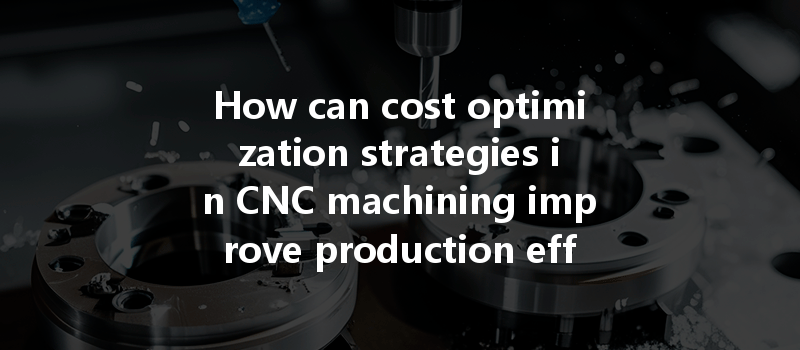Opening
Have you ever considered how a seemingly minor adjustment in machining operations can drastically alter production costs? A recent study revealed that manufacturers that implement effective cost optimization strategies in their CNC machining processes can save up to 30% in operational expenses while simultaneously increasing production efficiency by 20%. This striking statistic highlights not just the necessity for optimization, but the remarkable impact on the overall competitiveness of manufacturing enterprises. As industries evolve, the need for cost-effective solutions without compromising quality becomes ever more paramount. In this blog post, we’ll explore various cost optimization strategies in CNC machining that can significantly enhance production efficiency without compromising on quality.
Understanding CNC Machining and Its Importance
Computer Numerical Control (CNC) machining is a pivotal technology in modern manufacturing. By automating the control of machine tools, CNC machining allows for precise fabrication of parts from a variety of materials, including metals, plastics, and composites. Its impact spans across numerous industries, from aerospace and automotive to medical and consumer goods.
However, while CNC machining offers precision and efficiency, it can also entail substantial costs—both in terms of machining expenses and resource management. That’s where optimization strategies come into play.
Cost Optimization Strategies
One of the most significant costs in CNC machining is the raw material expenditure. Choosing the right materials—balancing quality, availability, and cost—can yield substantial savings.
Streamlining machining processes can immensely decrease production time and reduce costs.
Proper management of tools not only extends their life but also ensures quality outputs.
An often-overlooked factor in cost optimization is the workforce.

Lean manufacturing focuses on minimizing waste without sacrificing productivity.
Automation can dramatically enhance both efficiency and cost-effectiveness in CNC machining.
Quality Assurance: Not Compromised
While the focus of optimization is often on cost, one cannot overlook the critical aspect of quality.
Quality assurance is essential in CNC machining, and it should be integrated into every step of the manufacturing process.
Creating feedback loops where quality issues are reported and analyzed can help create long-term solutions rather than temporary fixes.
Establishing SOPs helps maintain consistent quality standards while also streamlining processes for maximum efficiency.
In an increasingly competitive market, the ability to implement cost optimization strategies in CNC machining can significantly improve production efficiency while maintaining high-quality standards. By focusing on aspects such as material selection, process optimization, tool management, employee training, lean techniques, and automation, manufacturers can achieve significant cost savings that contribute to their bottom line.
Ultimately, the balance between cost and quality becomes a central theme in the success of any CNC machining operation. As industries move forward, it’s essential to consider not just how to reduce costs, but how to innovate and enhance overall productivity and quality.
Optimizing your CNC machining processes is not just about cutting costs; it’s about enabling a culture of continuous improvement that stands the test of time and advances the manufacturing industry as a whole. By engaging in these practices, you position yourself and your business not as a player in the market, but as a leader in innovation and quality.
—






